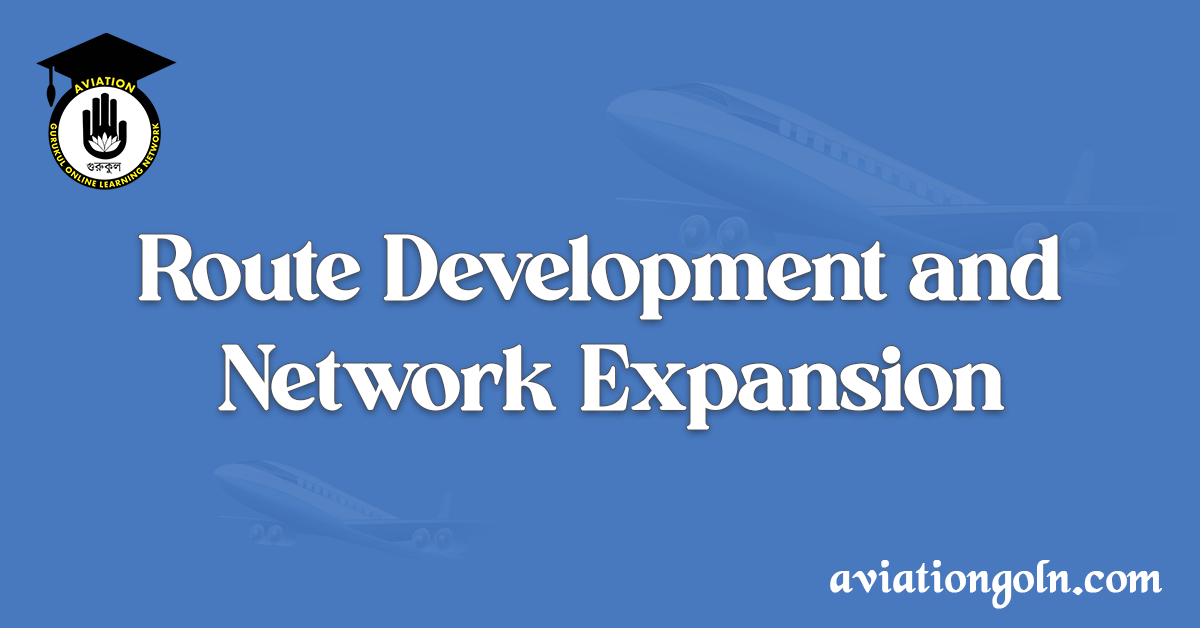Route Development and Network Expansion: The world of aviation has expanded immensely since the Wright brothers first took flight in 1903. Today, airlines connect the furthest corners of the globe, creating a network of routes that facilitate business, tourism, and cultural exchange. An intricate process backs this network, known as airline network and schedule planning. This article dives deep into the world of route development and network expansion, exploring the complexities of planning, the challenges faced, and the importance of these processes to the global airline industry.
Route Development and Network Expansion: Airline Network and Schedule Planning

1. Introduction
Airline network and schedule planning is a crucial process for any airline, whether a large international carrier or a regional service provider. It involves deciding where to fly, how often, and at what times. Proper planning ensures optimal utilization of resources, satisfies customer demand, and ultimately drives profitability.

2. The Basics of Airline Route Development
At its core, route development is about connecting point A to point B. However, the process is much more complex. Considerations include:
- Market Demand: Before launching a new route, airlines must evaluate if there’s a significant demand. This can stem from business needs, tourism, or other factors.
- Operational Considerations: These involve the aircraft type, its range, the availability of crew, and the airport infrastructure.
- Economic Viability: A route must not only have demand but must also be profitable. This involves considering ticket prices, competition, operating costs, and potential yields.

3. The Network Expansion Process
a. Data Collection and Analysis
Before venturing into a new route, airlines gather vast amounts of data. This data includes passenger travel patterns, ticket prices, competition analysis, and macroeconomic indicators. Advanced analytics tools and models help in understanding potential demand.
b. Strategic Alignment
Any network expansion must align with the airline’s broader strategy. For example, a budget airline may not look into luxury travel destinations, while a full-service carrier may avoid highly competitive low-cost routes.
c. Feasibility Study
A detailed feasibility study involves simulating the new route, considering aircraft availability, crew scheduling, and slot availability at airports. This phase may also require negotiations with airport authorities for landing rights and slots.
d. Implementation
Once a route gets a green light, the airline rolls out a marketing strategy, adjusts its reservation systems, and begins ticket sales.

4. Challenges in Route Development and Network Expansion
a. Regulatory Challenges
Air travel is a highly regulated industry. Bilateral air service agreements between countries dictate which airline can operate and how frequently. Navigating these regulations is crucial for international route development.
b. Competition
The aviation market is fiercely competitive. New routes, especially lucrative ones, may witness competition from multiple airlines. This can lead to price wars, impacting profitability.

c. Infrastructure Constraints
Airports have limited capacities. Acquiring a slot, especially at busy airports, can be a challenge. Additionally, the airport’s infrastructure might not support larger aircraft or increased frequencies.
d. Economic and Geopolitical Risks
Airline routes can be affected by economic downturns, geopolitical tensions, and other global events. The recent pandemic is an excellent example of how external factors can disrupt airline networks.

5. Importance of Scheduling in Airline Networks
Once a route is developed, the next step is scheduling. It involves deciding the frequency and timing of flights.
Optimal Utilization of Resources: Efficient scheduling ensures that aircraft are in the air as much as possible, maximizing profitability. It also involves considering maintenance schedules and crew availability.
Meeting Customer Demand: Schedules should align with customer preferences. For instance, business travelers may prefer early morning or late evening flights.
Connecting Flights: For network carriers, schedules should allow seamless connections, ensuring passengers can transfer between flights without long waits.

6. Future Trends in Route Development and Network Expansion
a. Focus on Sustainability
With growing environmental concerns, airlines are looking at sustainable routes. This could involve shorter routes, fuel-efficient aircraft, or flying to eco-friendly destinations.
b. Data-driven Decision Making
Big data and AI are playing a pivotal role in route development. Advanced analytics tools predict demand with higher accuracy, aiding in more informed decision-making.
c. Rise of Secondary Airports
As primary airports reach saturation, airlines are exploring secondary or regional airports. This also helps in catering to underserved markets.
d. Flexible Networks
In an uncertain world, flexibility is key. Airlines are increasingly looking at seasonal routes or adjusting frequencies based on real-time demand.

Route development and network expansion are at the heart of the airline industry. A meticulous blend of data analysis, strategic alignment, and operational efficiency drives the decision-making process. While challenges abound, the future holds promise with technology and sustainability taking center stage. As the world becomes more interconnected, the role of airline networks and schedule planning only becomes more pivotal in connecting people, cultures, and businesses.
Read more:
